Architecture practice Studio AMB has renovated a century-old traditional Japanese home in the Misumi region of Shimane to create a minimalist guesthouse, featuring a communal ground floor that is open to the elements. Intended to give a new generation...
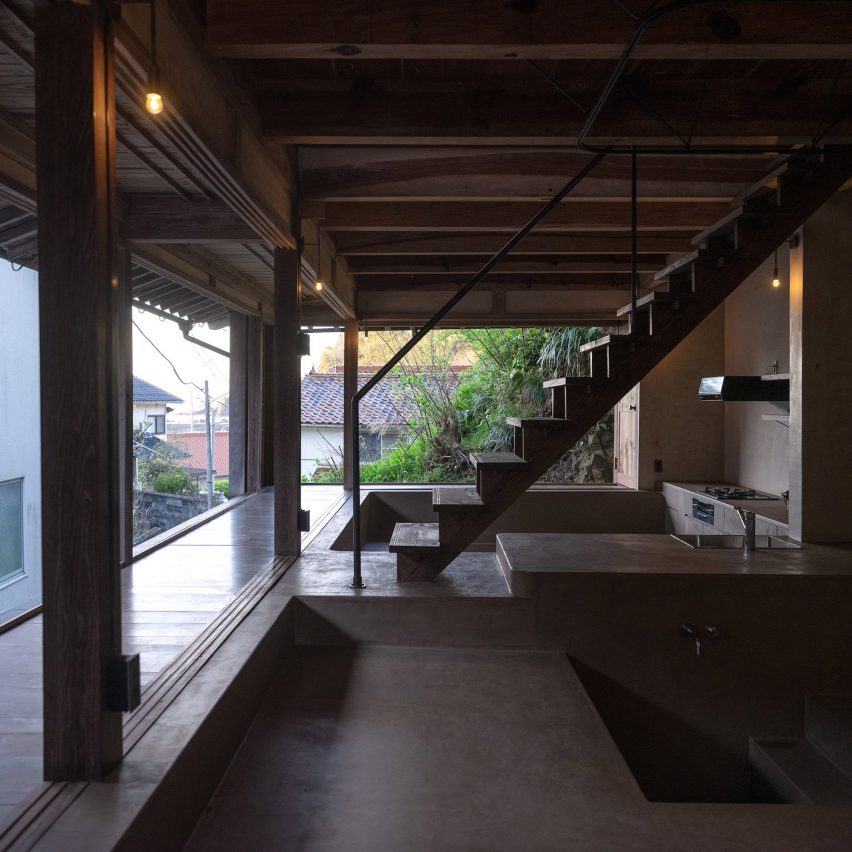
Architecture practice Studio AMB has renovated a century-old traditional Japanese home in the Misumi region of Shimane to create a minimalist guesthouse, featuring a communal ground floor that is open to the elements.
Intended to give a new generation of visitors the opportunity to "experience the local climate and culture" of the small fishing village, the dwelling was intended not only for private guests, but also as a gathering space for the local community when empty.
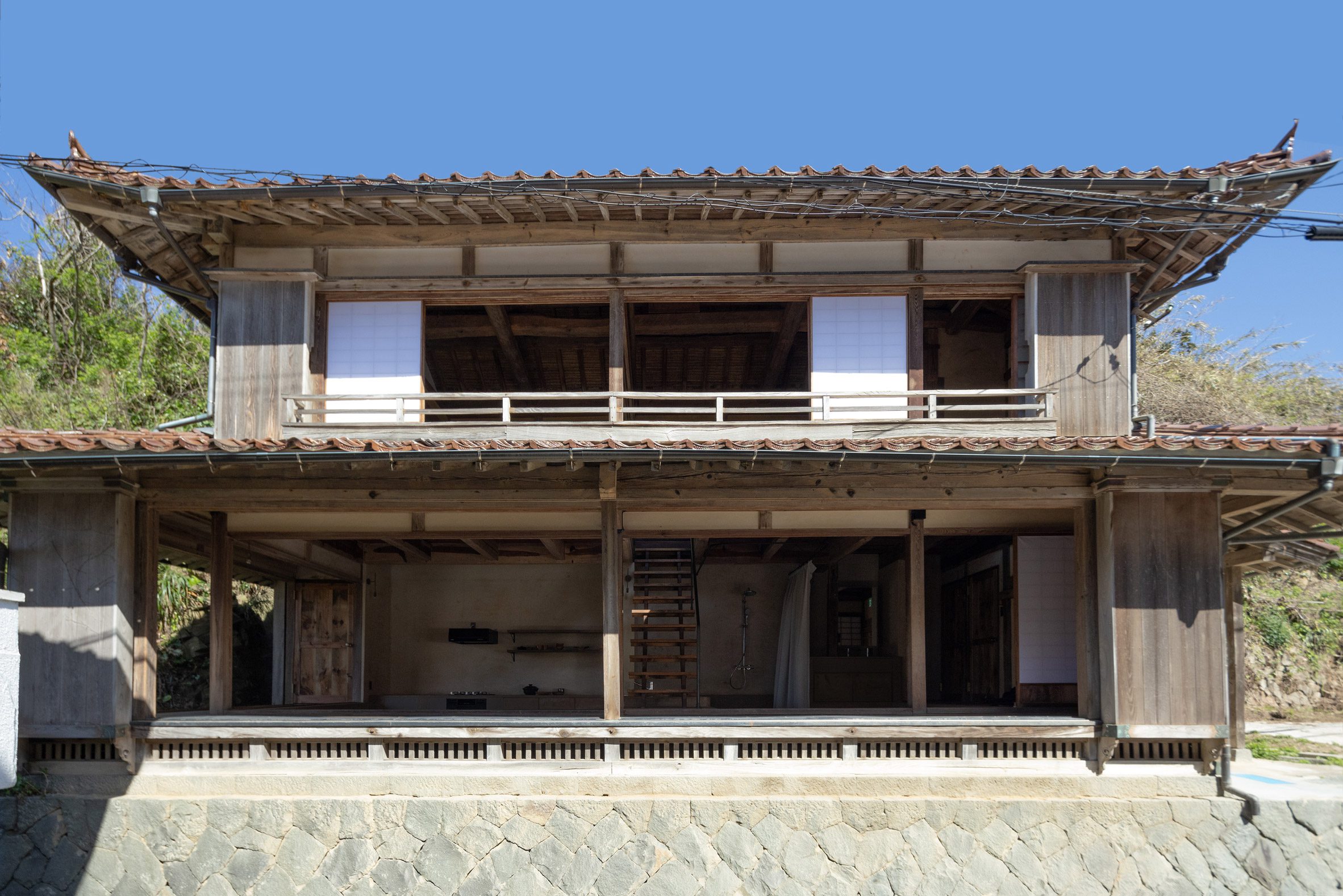 Studio AMB "reinterprets ancient traditions" for guesthouse in Japan
Studio AMB "reinterprets ancient traditions" for guesthouse in Japan
Retaining and reinforcing the existing wooden structure, Studio AMB looked to reinterpret the typical spaces of a traditional Japanese home, including the doma – an interstitial, dirt-floored space, and the engawa – a porch-style ledge around the edge of the building.
"Our approach diverges from the prevalent issue in Japan of 'scrap and build', opting instead to create spaces that reinterpret ancient traditions to pass on traditional homes to the future," the studio's founder Haruki Nakayama told Dezeen.
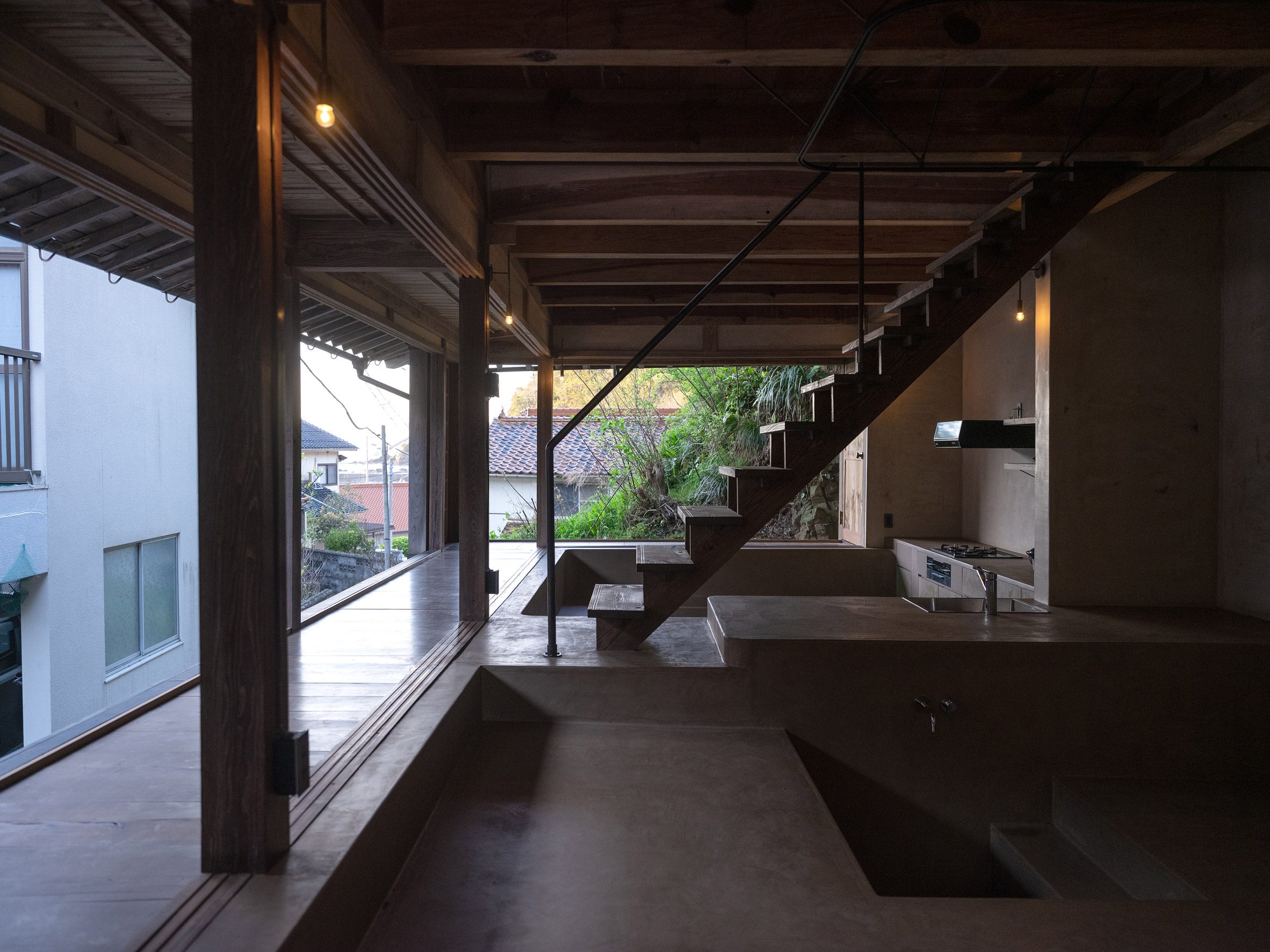 The home integrates a sunken kitchen and bathing area partially hidden by a perimeter engawa
The home integrates a sunken kitchen and bathing area partially hidden by a perimeter engawa
Digging down into the ground floor of the home has created space for a sunken kitchen and bathing area, partially hidden from view by the wooden engawa that wraps the perimeter of the home.
Slim wooden columns and the overhanging roof shelter these spaces, with the front of the home left almost entirely open to the elements and the rear protected by the sloping nature of the site.
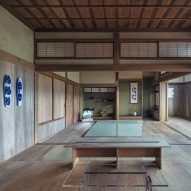
"In traditional Japanese dwellings, rooms with tatami mats are typically elevated about 50-60 centimetres above the ground, fostering a cultural practice of removing shoes when entering indoor spaces," explained Nakayama.
"Considering the places dealing with water – kitchens and baths – we envisioned creating a versatile space akin to the 'doma', enabling various activities depending on the users."
"It might transform into a traditional 'onsen' 'footbath', a 'pool', or even a pond for fish and plants for creating an installation to communicate with neighbours," he continued.
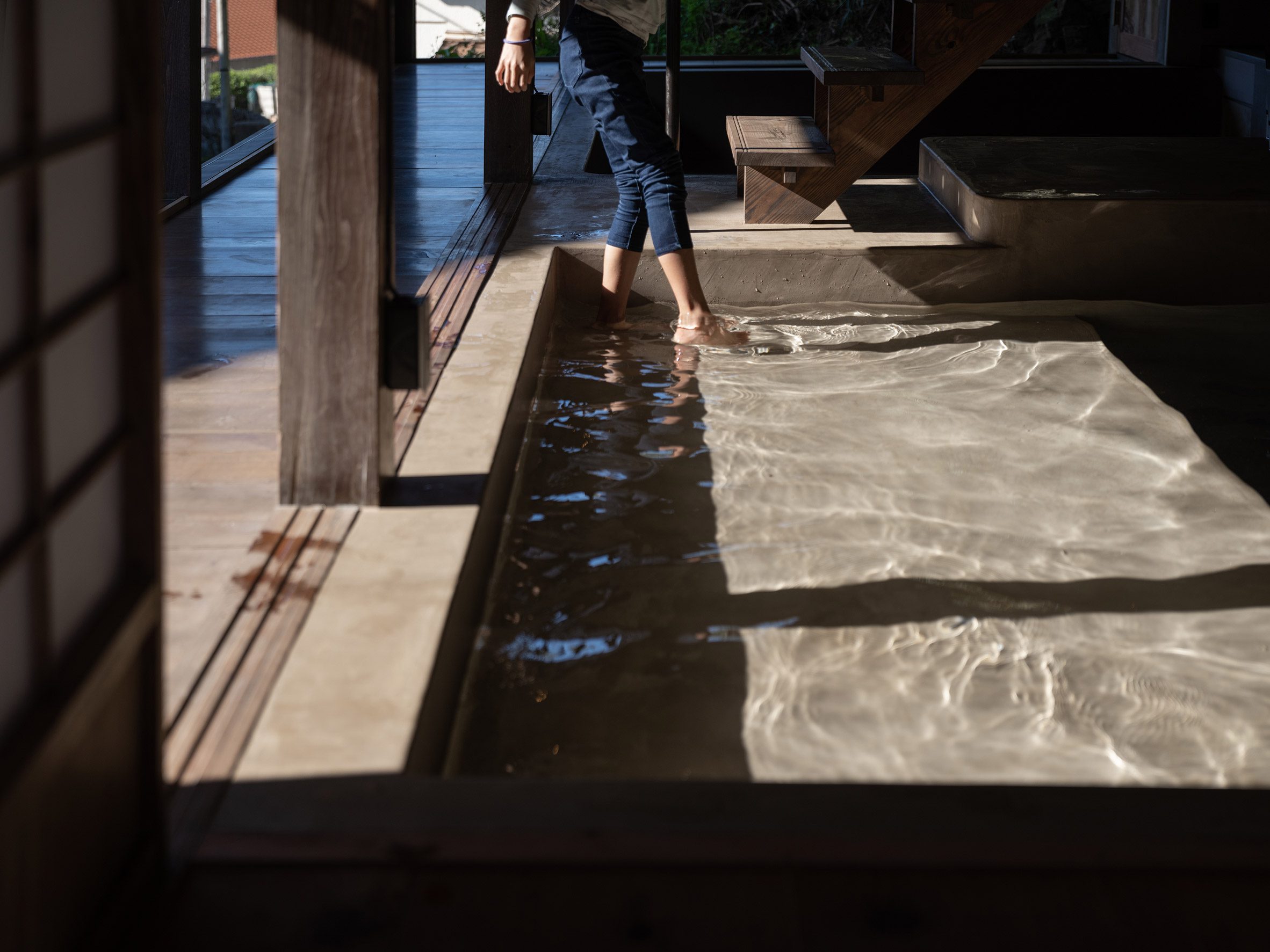 The sunken bathing area can act as an onsen, footbath or pool
The sunken bathing area can act as an onsen, footbath or pool
A small wooden staircase between the bathroom and kitchen leads up to the first floor, where the more private bedroom spaces are located, featuring tatami flooring and wooden screens that can open them up to the outside.
Wherever possible the project maintained the existing wooden finishes of the home, with the sunken ground floor areas finished with mortex coating to provide greater resilience and waterproofing while still "embodying the texture" of a traditional earthen doma.
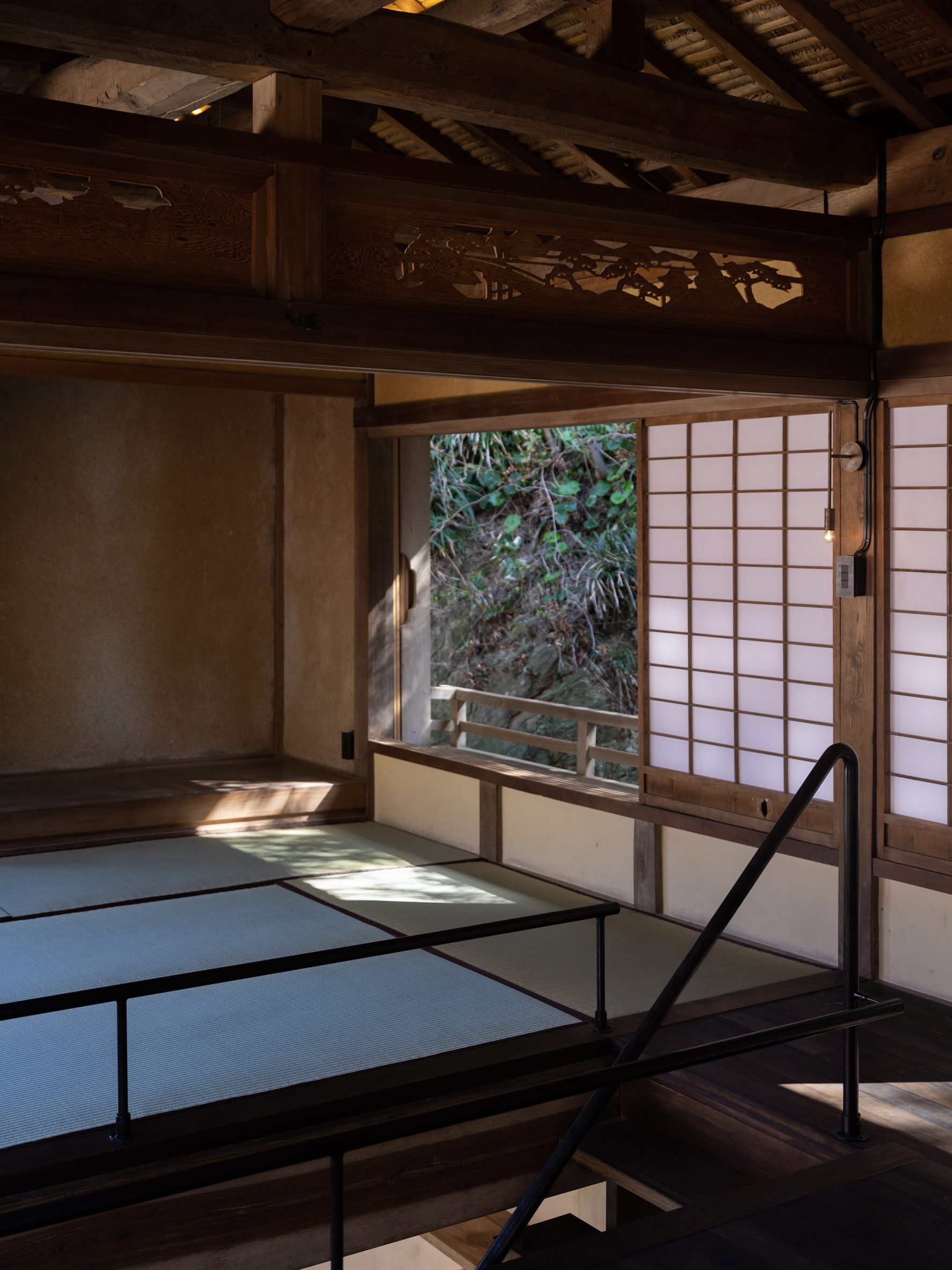 The first floor hosts more private bedroom spaces with tatami flooring and operable screens
The first floor hosts more private bedroom spaces with tatami flooring and operable screens
Other conversions of traditional Japanese homes include DDAA's transformation of an 86-year-old dwelling in Nagasaki prefecture into and office for pottery brand Maruhiro.
The photography is by Ryo Tsuchida and Studio AMB
The post Studio AMB "reinterprets ancient traditions" for guesthouse in Japan appeared first on Dezeen.


